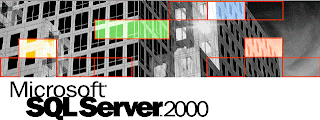SQL SERVER 2000:
1.Both are combined as SSMS(Sql Server management Studio).
2.XML datatype is used.
3.We can create 2(pow(20))-1 databases.
4.Exception Handling
5.Varchar(Max) data type
6.DDL Triggers
7.DataBase Mirroring
8.RowNumber function for paging
9.Table fragmentation
10.Full Text Search
11.Bulk Copy Update
12.TDE (Transparent Data Encryption) to encrypt the entire database introduced in 2008.
13.Can compress tables and indexes.
14.Date and time are separately used for date and time datatype,spatial and timestamps with internal timezone is used.
15.Varchar(max) and varbinary(max) is used.
16.Table datatype introduced.
17.SSIS avails in this version.
18.Central Management Server(CMS) is Introduced.
19.Policy based management(PBM) server is Introduced.
20. Auditing - monitoring of data access.
21. Resource Governor. Restrict users or groups from consuming high levels or resources.
22. Activity monitor: consolidates this information by detailing running and recently executed processes, graphically.
23. Backup compression
1.Query Analyser and Enterprise manager are separate.
2.No XML datatype is used.
3.We can create maximum of 65,535 databases.
4.Cant compress the tables and indexes.
5.Datetime datatype is used for both date and time.
6.No varchar(max) or varbinary(max) is available.
7.No table datatype is included.
8.No SSIS is included.
9.CMS (Cenntral Management Server) is not available.
10.PBM (Policy Based Management) is not available.
11.High Availability Clustering or Log Shipping require Enterprise Edition. Expensive hardware.
SQL SERVER 2005:

1.Both are combined as SSMS(Sql Server management Studio).
2.XML datatype is introduced.
3.We can create 2(pow(20))-1 databases.
4.Exception Handling
5.Varchar(Max) data type
6.DDL Triggers
7.DataBase Mirroring
8.RowNumber function for paging
9.Table fragmentation
10.Full Text Search
11.Bulk Copy Update
12.Cant encrypt the entire database.
13.Can Compress tables and indexes.(Introduced in 2005 SP2)
14.Datetime is used for both date and time.
15.Varchar(max) and varbinary(max) is used.
16.No table datatype is included.
17.SSIS is started using.
18.CMS is not available.
19.PBM is not available.
20. High Availability Clustering, Database Mirroring or Log Shipping available in Standard Edition. Database Mirroring can use cheap hardware.
SQL SERVER 2008:
4.Cant compress the tables and indexes.
5.Datetime datatype is used for both date and time.
6.No varchar(max) or varbinary(max) is available.
7.No table datatype is included.
8.No SSIS is included.
9.CMS (Cenntral Management Server) is not available.
10.PBM (Policy Based Management) is not available.
11.High Availability Clustering or Log Shipping require Enterprise Edition. Expensive hardware.
SQL SERVER 2005:

1.Both are combined as SSMS(Sql Server management Studio).
2.XML datatype is introduced.
3.We can create 2(pow(20))-1 databases.
4.Exception Handling
5.Varchar(Max) data type
6.DDL Triggers
7.DataBase Mirroring
8.RowNumber function for paging
9.Table fragmentation
10.Full Text Search
11.Bulk Copy Update
12.Cant encrypt the entire database.
13.Can Compress tables and indexes.(Introduced in 2005 SP2)
14.Datetime is used for both date and time.
15.Varchar(max) and varbinary(max) is used.
16.No table datatype is included.
17.SSIS is started using.
18.CMS is not available.
19.PBM is not available.
20. High Availability Clustering, Database Mirroring or Log Shipping available in Standard Edition. Database Mirroring can use cheap hardware.
SQL SERVER 2008:
1.Both are combined as SSMS(Sql Server management Studio).
2.XML datatype is used.
3.We can create 2(pow(20))-1 databases.
4.Exception Handling
5.Varchar(Max) data type
6.DDL Triggers
7.DataBase Mirroring
8.RowNumber function for paging
9.Table fragmentation
10.Full Text Search
11.Bulk Copy Update
12.TDE (Transparent Data Encryption) to encrypt the entire database introduced in 2008.
13.Can compress tables and indexes.
14.Date and time are separately used for date and time datatype,spatial and timestamps with internal timezone is used.
15.Varchar(max) and varbinary(max) is used.
16.Table datatype introduced.
17.SSIS avails in this version.
18.Central Management Server(CMS) is Introduced.
19.Policy based management(PBM) server is Introduced.
20. Auditing - monitoring of data access.
21. Resource Governor. Restrict users or groups from consuming high levels or resources.
22. Activity monitor: consolidates this information by detailing running and recently executed processes, graphically.
23. Backup compression


No comments:
Post a Comment